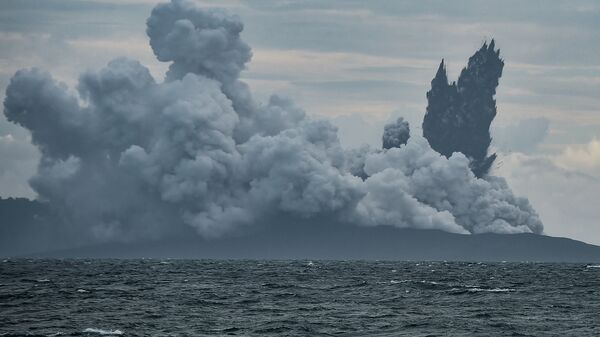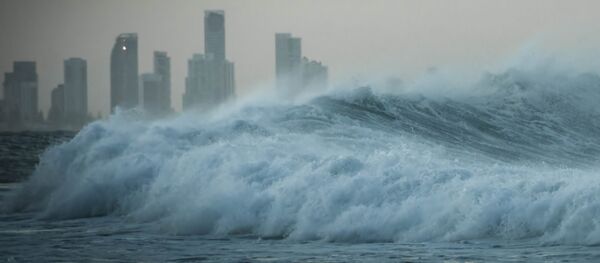The volcano Anak Krakatau, which caused a massive tsunami that struck several Indonesian islands, has lost ¾ of its volume and reduced in height from 338 metres to 110 metres as a result of the latest eruption, Indonesia's Centre for Volcanology and Geological Disaster Mitigation said. The latest assessment has led volcano experts believe that a new powerful tsunami is unlikely since the volcano has lost its mass and power.
The Centre managed to get a picture of the volcano's transformation using satellite radar images because visual assessment is not possible at the moment due to continuing eruptions maintaining a cloud cover made of smoke and ash.
This is the second time Anak Krakatau has been massively destroyed by its own eruption. The original volcano (known as Krakatau) was destroyed in a powerful eruption in 1883, which had the power of explosion around 200 megatons, which is 10,000 times bigger than the one that hit Hiroshima in the Second World War.
Perubahan tubuh Gunung Anak Krakatau. PVMBG memperkirakan yang semula tinggi 338 meter, saat ini 110 meter. Volume Anak Krakatau hilang 150-170 juta m3. Volume saat ini 40-70 juta m3. Berkurangnya volume tubuh GAK disebabkan proses rayapan tubuh & erosi selama 24-27/12/2018. pic.twitter.com/bDish7O0Ms
— Sutopo Purwo Nugroho (@Sutopo_PN) December 28, 2018
READ MORE: Indonesia Reroutes All Flights as Volcano Alert Level Raised — Reports
The eruption completely destroyed Krakatau, leaving only three small islands in its place, and caused 20-metre-high tsunami waves that claimed around 32,000 lives. The ash from the eruptions reached the upper layers of the atmosphere and persisted there for several years.
Satellite images show collapse of Indonesian island volcano Anak Krakatau https://t.co/OSANKQvB90
— Stephen Wright (@stephenwrightAP) December 27, 2018
The volcano re-emerged in 1927 and has since been known as Anak Krakatau (child of Krakatau) and was initially only 67 metres high, rising eventually to over 300 metres, but never reaching the 2-kilometre height of its "father".



